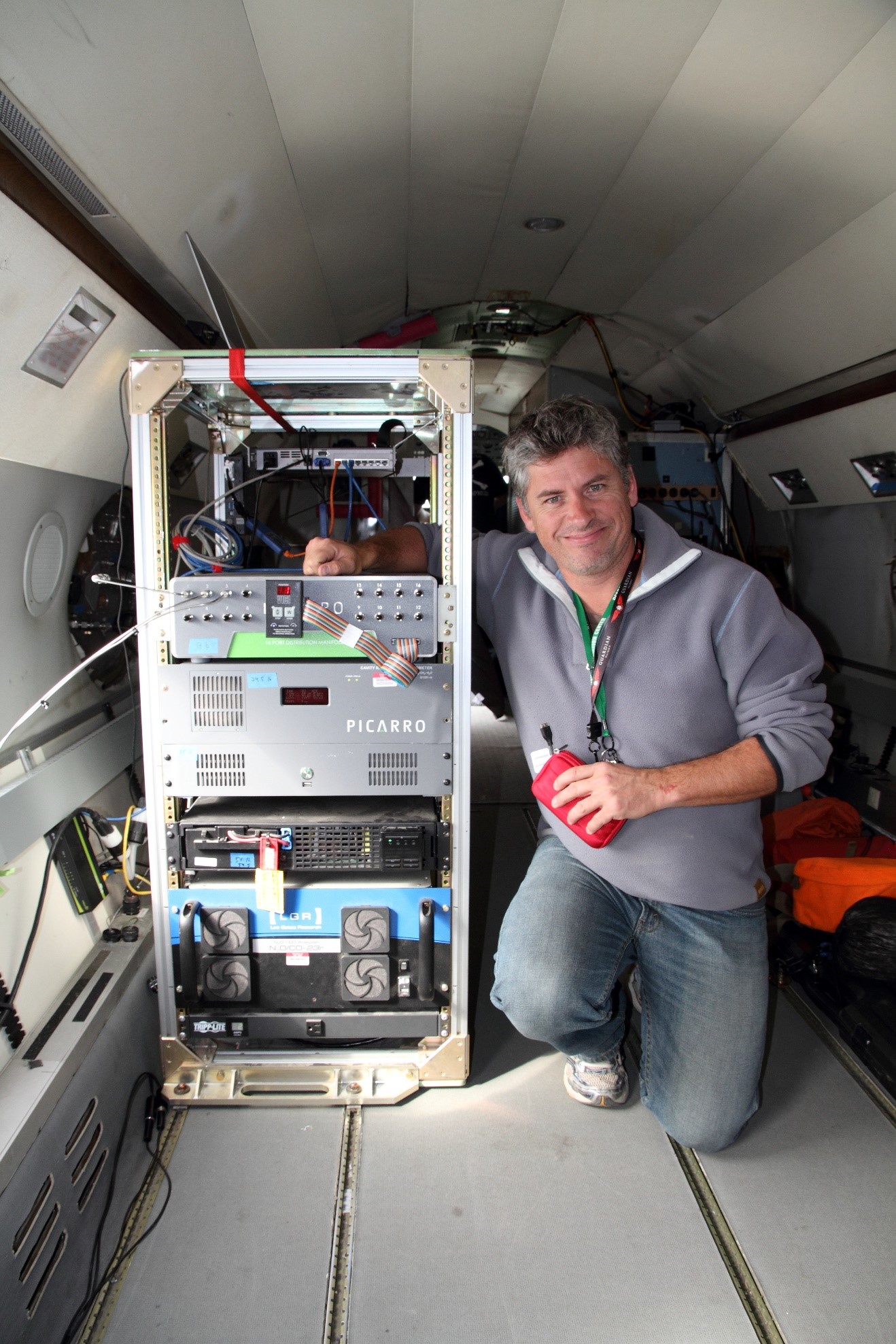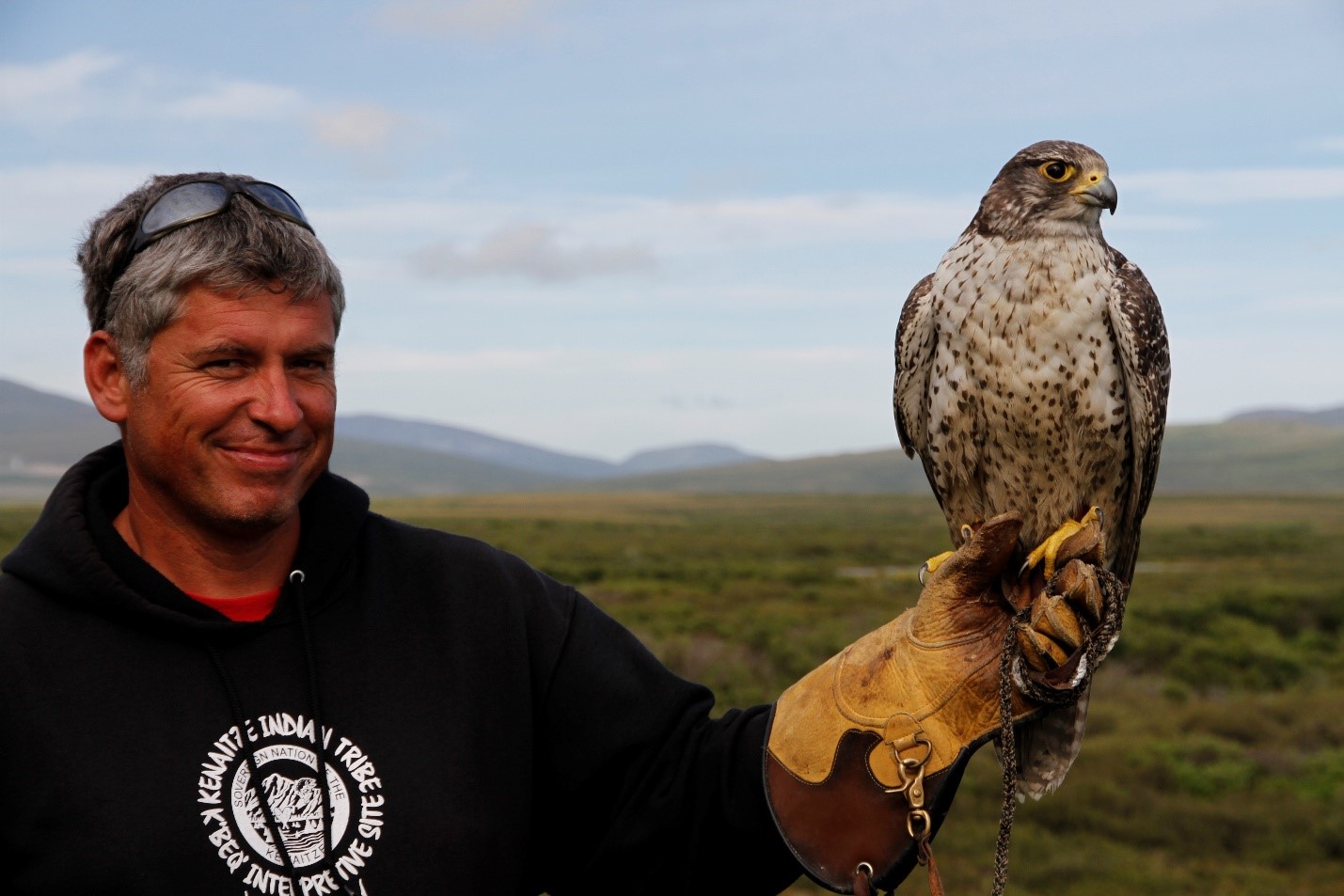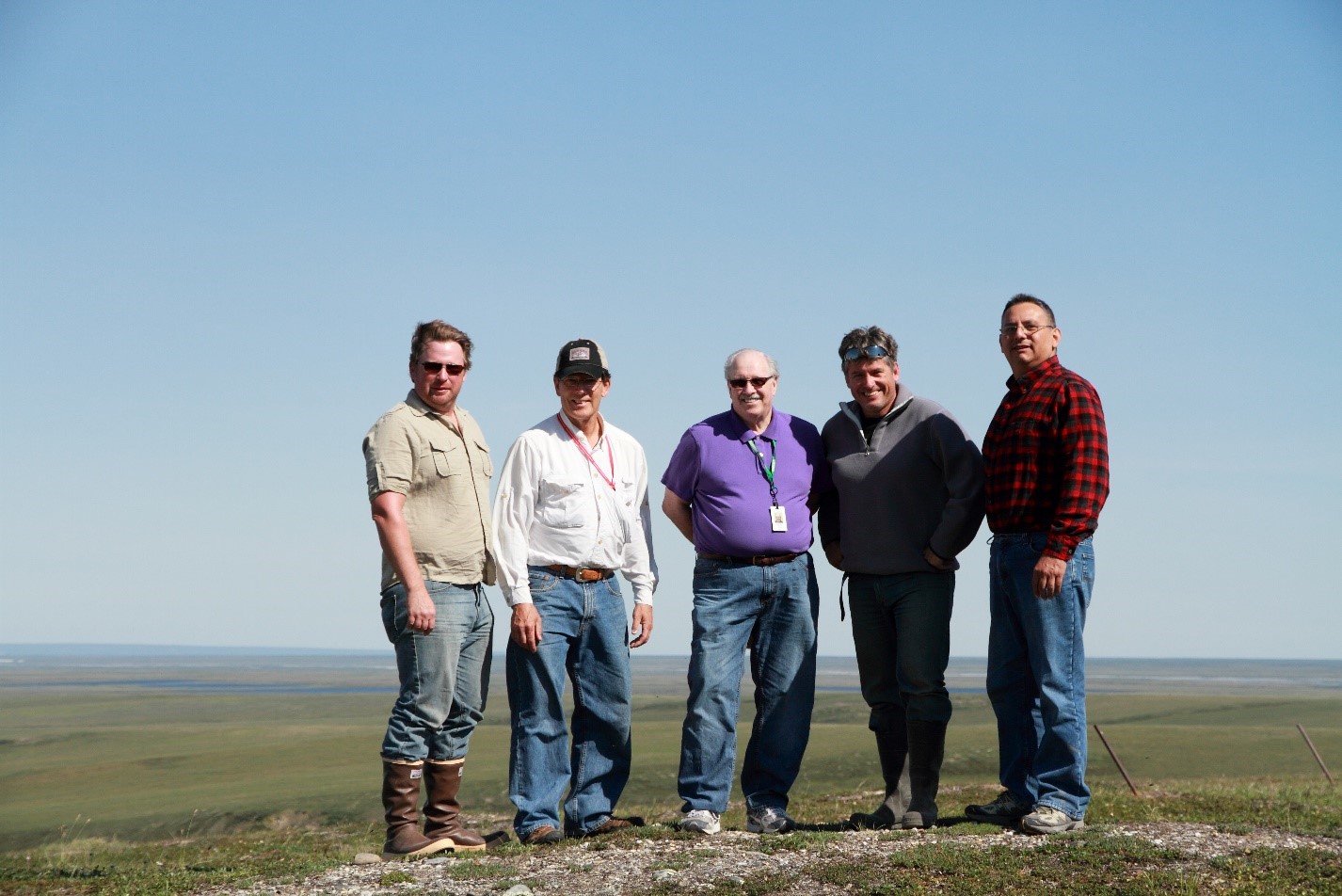UEC Profile: Sébastien Biraud’s Path to the Critical Science of Measuring Trace Gases
Published: 18 February 2018
He Followed Physics, Flight, Diving, and ‘Toys’ Into Investigations of the Carbon Cycle.
This is the second article in a series of profiles on members of the ARM User Executive Committee (UEC).

One day in 1988, at an airfield just outside Paris, France, 16-year-old Sébastien Biraud climbed into a compact red-and-white Cessna 150, revved the single propeller into action, and took off down a runway. It was his first solo flight and an early sign of his passion for getting a view of the Earth from above.
“Before driving cars, I was flying airplanes,” Biraud says today from his office at Lawrence Berkeley National Laboratory (LBNL). He is a research scientist there, an expert in the carbon cycle, head of the climate sciences department, and for 15 years a veteran of airborne science campaigns, including several with the ARM Climate Research Facility.
Biraud is also vice chair of the 12-member ARM User Executive Committee (UEC), a group formed to represent researchers who tap the U.S. Department of Energy (DOE) user facility’s archived data and widespread observatory instruments.
The UEC helps give a voice to ARM data users while interacting with data providers, ARM developers, DOE program managers, and others. “It’s a feedback loop” designed for listening, says Biraud.
Going Under, Going Over
It was in 1988 that two passions bloomed and converged for Biraud: aviation and scuba diving. “Those are two hobbies dear to my heart—going under and going over,” he says.
Diving, in part, was inspired by French undersea explorer Jacques Cousteau. As a boy, Biraud watched Cousteau’s 1956 documentary “The Silent World” (“Le monde du silence”) and acquired a rapture for the deep.
In time, before his PhD studies, Biraud served in Brittany as a young officer in the French air force. He expanded his diving skills there, in the cold Atlantic Ocean. He finned over submerged wrecks along the west coast of France, which had witnessed centuries of naval warfare and seagoing disasters. Biraud walked on the decks of sunken galleons from the 16th century and peered at wrecked submarines and warships.
During a boyhood in the suburbs of Paris, he cultivated emerging natural interests in history, flight, and adventure. Biraud’s father was an aeronautical engineer tied to a group restoring aircraft from the 20th century’s two world wars.
“I wanted to fly them,” Biraud says of the vintage planes. But as a boy, he settled for just sitting in a few.
By age 18, Biraud had earned all the right certifications to be ready for a career as a military pilot, his first dream. Then: uh-oh. A pre-enlistment eye exam concluded (rightly, he says) that Biraud would be myopic by his 30s or 40s—enough reason for France’s strict military air arm to deny his application.
He defaulted to his equally deep interest in physics and entered university. As he explains, “There is a lot of physics in flying, of course.”
A Sense of Space, the Lure of Remote Sensing
Biraud was an undergraduate at the University of Paris VII (B.S., 1994). For the first two years, he was under the spell of the polymathic Bernard Diu, a world-class practitioner of quantum and statistical physics as well as a novelist and epistemologist.
“He was the most stunning professor of physics I ever had,” says Biraud, who remembers one class being challenged to do all the calculations to build a zero-gravity space station. “Everything he taught us was tied to practical examples.”
That practical edge of physics drew the young Biraud to the realm of instruments then being developed to mount on satellites for remote sensing of Earth. The physical methods of doing that was a subject he pursued in his master’s degree work, also at the University of Paris VII (M.S., 1995).
After a one-year stint in the military, he took up his doctoral studies at CEA/LSCE (PhD, 2000), or Commissariat à l’Energie Atomique / Laboratoire des Sciences du Climat et de l’Environnement. Biraud describes it as ″similar to a national lab in the United States.″
One West Coast to Another

During his PhD studies, Biraud did research at the Mace Head Atmospheric Research Station on the west coast of Ireland in an Irish-speaking area of County Galway. With its westerly exposure to the Atlantic, the station was an ideal place to capture data on emissions from the European continent.
The station’s role is “critical still,” says Biraud, who also spent his first postdoctoral year there, thanks to a fellowship from the National University of Ireland Galway.
After that, Biraud was “ready to give up science,” he says, and turn to a career developing instruments in the burgeoning remote sensing instrumentation industry. But his wife was offered a postdoctoral fellowship at the University of California, Berkeley; he got one too. (She is now at Lawrence Livermore National Laboratory, analyzing simulations for the Intergovernmental Panel on Climate Change.)
“She blames me for her being American now,” he says with a laugh. “I am thrilled to be here.”
Hired at Berkeley to do modeling, Biraud before long was able to pursue a more personally fulfilling career path: developing instrumentation.
“It was my salvation,” he says. “I like to play with stuff—toys, equipment.”
That line of work soon got him hired full time at LBNL.
Unraveling the Carbon Budget
Biraud and his wife moved to the United States two weeks before the 9/11 attacks. The fallout of those events invalidated Biraud’s flying credentials.
But over time, “I flew by proxy,” he says. Since 2003, he has been involved in one atmospheric science campaign or another with an airborne research component.
LBNL hired Biraud full time in 2003 to work on its Carbon Project team, which was involved with the 2000-2007 In Situ Aerosol Profiles (IAP) field campaign. IAP was initially focused on aerosol profiles, but the LBNL team proposed adding trace gas measurements to the aircraft payload.
During IAP, data on carbon and trace gases in the atmosphere were gathered in the skies over ARM’s Southern Great Plains (SGP) atmospheric observatory in Oklahoma. In 2008, IAP morphed into a series of field campaigns called ARM Airborne Carbon Measurements (ARM-ACME).
Taken together, the IAP and ACME campaigns constitute an intensive 15-year airborne study of the carbon cycle—an ARM-wide investigation of land-atmosphere gas exchanges and the transport of carbon over long distances.
In time, says Biraud, the IAP mission came to be seen as “an important part of ARM instrumentation and capabilities, and in line with the ARM mission.”
The kind of instrument systems Biraud developed and tested “became baseline instruments for all sites,” he says of ARM atmospheric observatories, particularly after 2012.
One favorite is a Picarro, a trace gas analyzer the size of an end table, designed to measure levels of carbon dioxide and methane at a high level of precision and accuracy.
These kind of measurements give scientists insight into how carbon is passed from different “pools” on land and in the air, he says. Scientists use such data to investigate our planet’s carbon budget, and how that budget evolves within earth systems that constantly intersect.
A Widening ARM Aim at Carbon

Never one to stand still, Biraud has been part of efforts to measure trace gases beyond IAP’s original research footprint covering at ARM’s SGP site. Today he is principal investigator (PI) in a number of related ongoing projects.
In one, he manages the AmeriFlux network of observation sites supported by DOE’s Terrestrial Ecosystem Science program. The goal is to coordinate long-term carbon dioxide and energy flux measurements across the Americas, mostly at sites in the United States and Canada.
Biraud calls the program a “coalition of the willing”—researchers willing to provide observations collected from a series of flux towers located in a variety of ecosystems, from near-featureless tundra to tall-tree tropical forests.
Instruments on the towers share a common mission: to gather continuous information on the exchange of carbon, water, and energy between vegetation and the air above it. The data are streamed from the towers, processed by site PIs, and used by the scientific community for a synthesis project.
Also, Biraud was lead PI for the ARM Airborne Carbon Measurements V (ARM-ACME V) field campaign. From June through September 2015, this intensive campaign over the North Slope of Alaska collected that region’s first-ever airborne trace gas data.
This “unique ecosystem” had not been intensively swept until ARM-ACME V, says Biraud. “It’s a fast-changing part of the world,” where permafrost degradation will affect the geochemistry of the terrain, and where (for now) immense quantities of carbon are sequestered.
In the next five years, Biraud will be immersed in the present debate over methane, a gas whose levels in the atmosphere have spiked since 2006. The main source of that spike is uncertain.
In the very near future—that is, this March 19-23—Biraud will be executing his role with the UEC at the annual joint meeting of the ARM user facility and PIs from the DOE’s Atmospheric System Research program. During the event, UEC members will host a lunch for new PIs.
“ARM is a big machine, with lots of components,” says Biraud. “We want to make sure new PIs know what ARM is.”
The ARM Climate Research Facility is a DOE Office of Science user facility. The ARM Facility is operated by nine DOE national laboratories, including Lawrence Berkeley National Laboratory.
Keep up with the Atmospheric Observer
Updates on ARM news, events, and opportunities delivered to your inbox
ARM User Profile
ARM welcomes users from all institutions and nations. A free ARM user account is needed to access ARM data.


















